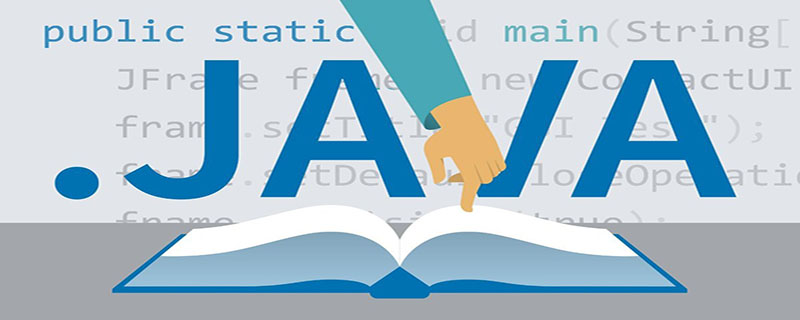In Java language, what is the difference between throw and throws

Difference analysis:
(Recommended tutorial: java introductory tutorial)
throws: Used to declare that a method may generate All exceptions will be uploaded without any processing, and will be thrown to whoever calls.
is used after the method declaration, followed by the exception class name
can be followed by multiple exception class names, separated by commas
indicates that an exception is thrown, which is handled by the caller of the method
throws indicates the possibility of an exception, which may not necessarily occur. These exceptions
throw: are used to throw a specific exception type.
Used in the method body, followed by the exception object name
Only one exception object name can be thrown
means throwing an exception, which is handled by the statements in the method body
throw means throwing an exception, and executing throw must throw some kind of exception
Let’s introduce them separately:
throws declares exceptions after the method. In fact, it means that you don’t want to do anything with the exception, tell others about the exceptions that may occur, and leave it to others. deal with.
Code example:
package com.xinkaipu.Exception;
class Math{
public int div(int i,int j) throws Exception{
int t=i/j;
return t;
}
}
public class ThrowsDemo {
public static void main(String args[]) throws Exception{
Math m=new Math();
}
}(Video tutorial recommendation: java video tutorial)
throw: handle an exception yourself, or catch the exception yourself The try...catch code block either throws an exception (throws exception).
Code implementation:
package com.xinkaipu.Exception;
public class TestThrow
{
public static void main(String[] args)
{
try
{
//调用带throws声明的方法,必须显式捕获该异常
//否则,必须在main方法中再次声明抛出
throwChecked(-3);
}
catch (Exception e)
{
System.out.println(e.getMessage());
}
//调用抛出Runtime异常的方法既可以显式捕获该异常,
//也可不理会该异常
throwRuntime(3);
}
public static void throwChecked(int a)throws Exception
{
if (a > 0)
{
//自行抛出Exception异常
//该代码必须处于try块里,或处于带throws声明的方法中
throw new Exception("a的值大于0,不符合要求");
}
}
public static void throwRuntime(int a)
{
if (a > 0)
{
//自行抛出RuntimeException异常,既可以显式捕获该异常
//也可完全不理会该异常,把该异常交给该方法调用者处理
throw new RuntimeException("a的值大于0,不符合要求");
}
}
}The above is the detailed content of In Java language, what is the difference between throw and throws. For more information, please follow other related articles on the PHP Chinese website!

Hot AI Tools

Undresser.AI Undress
AI-powered app for creating realistic nude photos

AI Clothes Remover
Online AI tool for removing clothes from photos.

Undress AI Tool
Undress images for free

Clothoff.io
AI clothes remover

AI Hentai Generator
Generate AI Hentai for free.

Hot Article

Hot Tools

Notepad++7.3.1
Easy-to-use and free code editor

SublimeText3 Chinese version
Chinese version, very easy to use

Zend Studio 13.0.1
Powerful PHP integrated development environment

Dreamweaver CS6
Visual web development tools

SublimeText3 Mac version
God-level code editing software (SublimeText3)

Hot Topics
 Square Root in Java
Aug 30, 2024 pm 04:26 PM
Square Root in Java
Aug 30, 2024 pm 04:26 PM
Guide to Square Root in Java. Here we discuss how Square Root works in Java with example and its code implementation respectively.
 Perfect Number in Java
Aug 30, 2024 pm 04:28 PM
Perfect Number in Java
Aug 30, 2024 pm 04:28 PM
Guide to Perfect Number in Java. Here we discuss the Definition, How to check Perfect number in Java?, examples with code implementation.
 Random Number Generator in Java
Aug 30, 2024 pm 04:27 PM
Random Number Generator in Java
Aug 30, 2024 pm 04:27 PM
Guide to Random Number Generator in Java. Here we discuss Functions in Java with examples and two different Generators with ther examples.
 Armstrong Number in Java
Aug 30, 2024 pm 04:26 PM
Armstrong Number in Java
Aug 30, 2024 pm 04:26 PM
Guide to the Armstrong Number in Java. Here we discuss an introduction to Armstrong's number in java along with some of the code.
 Weka in Java
Aug 30, 2024 pm 04:28 PM
Weka in Java
Aug 30, 2024 pm 04:28 PM
Guide to Weka in Java. Here we discuss the Introduction, how to use weka java, the type of platform, and advantages with examples.
 Smith Number in Java
Aug 30, 2024 pm 04:28 PM
Smith Number in Java
Aug 30, 2024 pm 04:28 PM
Guide to Smith Number in Java. Here we discuss the Definition, How to check smith number in Java? example with code implementation.
 Java Spring Interview Questions
Aug 30, 2024 pm 04:29 PM
Java Spring Interview Questions
Aug 30, 2024 pm 04:29 PM
In this article, we have kept the most asked Java Spring Interview Questions with their detailed answers. So that you can crack the interview.
 Break or return from Java 8 stream forEach?
Feb 07, 2025 pm 12:09 PM
Break or return from Java 8 stream forEach?
Feb 07, 2025 pm 12:09 PM
Java 8 introduces the Stream API, providing a powerful and expressive way to process data collections. However, a common question when using Stream is: How to break or return from a forEach operation? Traditional loops allow for early interruption or return, but Stream's forEach method does not directly support this method. This article will explain the reasons and explore alternative methods for implementing premature termination in Stream processing systems. Further reading: Java Stream API improvements Understand Stream forEach The forEach method is a terminal operation that performs one operation on each element in the Stream. Its design intention is






